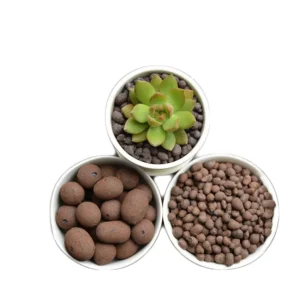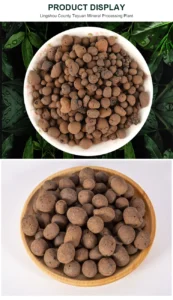In the flourishing hobby of succulent plant cultivation, clay balls have emerged as a game – changing component. These small spheres offer a plethora of benefits that are perfectly tailored to the unique needs of succulents.
Composition and Structure of Clay Balls
Clay balls are typically fashioned from natural clay materials. The clay is carefully processed, often through a firing procedure, which endows them with a specific structure. Some are made from common garden clay, while others are crafted from specialized clays. A renowned pottery studio revealed that they use a blend of clays to achieve the ideal balance of porosity and durability in their clay balls for succulent cultivation.
Physical Traits Ideal for Succulents
They are lightweight, making them easy to handle when setting up a succulent planter. Their spherical shape allows for easy arrangement within the pot. Clay balls come in various sizes, with smaller ones being great for delicate, miniature succulents, and larger ones providing a more substantial base for bigger specimens. A recent succulent exhibition showcased different arrangements using diverse – sized clay balls.

Drainage Perfection for Succulents
Succulents are highly sensitive to over – watering, and clay balls are a boon in this regard. Their porous nature ensures excellent drainage. Water quickly passes through the clay balls, preventing waterlogging at the bottom of the pot. A study by a horticultural institute found that succulents planted with clay balls had 60% fewer cases of root rot compared to those in pots without proper drainage.
Aeration for Robust Succulent Roots
The porosity of clay balls also promotes enhanced air circulation around the roots. Succulent roots need oxygen to thrive, and the clay balls’ pores create channels for air to reach the roots. In a community succulent – growing project, plants grown with clay balls exhibited more robust root systems, leading to healthier and more resilient succulents.
Aesthetic Appeal in Succulent Arrangements
Clay balls add an aesthetically pleasing element to succulent planters. Their earthy colors and smooth texture blend well with the natural look of succulents. They can be used as a top – dressing, covering the soil surface and creating a clean and attractive appearance. Many popular succulent – focused social media accounts feature pictures of clay – ball – adorned succulent arrangements.
Compatibility with Different Succulent Varieties
Clay balls are highly compatible with a wide array of succulent varieties. Whether it’s the spiky Echeverias, the trailing Sedums, or the unique Haworthias, clay balls can support their growth. A succulent nursery in California reported that they use clay balls for all their succulent propagation and have seen great results across different species.
Laying the Groundwork in Succulent Pots
In succulent pots, clay balls can be used to create a multi – layer setup. A bottom layer of larger clay balls forms a solid drainage base. This can be topped with a layer of smaller clay balls mixed with soil, providing an ideal growing environment for succulent roots. A gardening blog detailed a step – by – step guide on using clay balls in succulent pots.

Maintenance and Long – term Use
Maintaining clay balls in succulent cultivation is relatively simple. They are durable and do not break down easily over time. However, occasional cleaning may be required to remove any accumulated salts or debris. If the clay balls become clogged, a gentle rinse can restore their functionality.
Cost – effectiveness for Succulent Enthusiasts
Despite their numerous benefits, clay balls are cost – effective. They offer long – term value as they do not need frequent replacement. A home succulent gardener in Texas calculated that using clay balls saved her money in the long run by reducing the need for expensive soil replacements due to water – related issues.
Environmental Sustainability
From an environmental perspective, clay balls are a sustainable option. Made from natural clay materials, and with their long – lasting nature, they reduce the need for frequent replacement, thus minimizing waste. A study on sustainable gardening practices praised the use of clay balls for their eco – friendliness.
In conclusion, clay balls offer a comprehensive solution for succulent plant cultivation. Their combination of physical, drainage, and aesthetic benefits makes them an ideal choice for both novice and experienced succulent enthusiasts.

